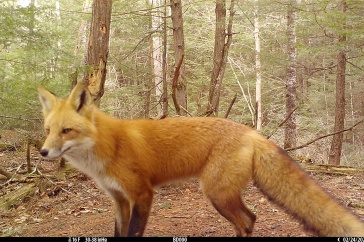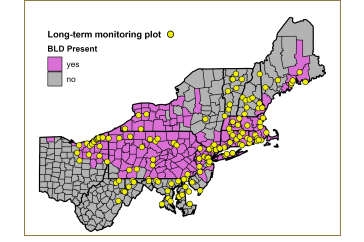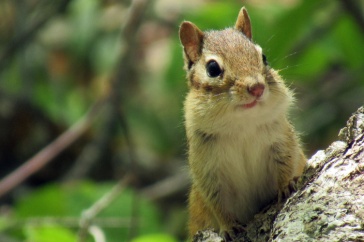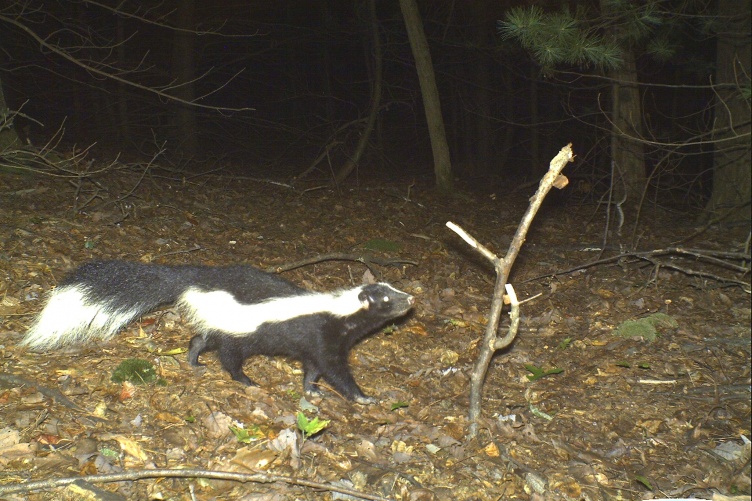
Camera trap image taken of a striped skunk by the Appalachian Trail Project. Photo published on emammal.si.edu and available via a Creative Commons license.
Try searching for “skunks in New Hampshire” and you’ll see numerous listings for pest control services. But the omnivorous striped skunk (Mephitis mephitis)—New England’s only native skunk species—plays an important but often underappreciated role in the region’s ecosystems as a predator and seed disperser. Skunks are also an important indicator of how wildlife might respond more broadly to increasing urbanization and climate change. New research from the New Hampshire Agricultural Experiment Station (NHAES) examines factors that affect skunk abundance in the region and across the United States, underscoring the importance of collaborative databases in providing information for large geographic and broad-scale studies of understudied species.
NHAES scientist Rem Moll, assistant professor in the UNH College of Life Sciences and Agriculture, along with researchers from the University of Illinois and the University of Utah, published their findings in a recent issue of the Global Ecology and Conservation journal. The research develops a model for determining regional abundance of skunks, which live in every U.S. state except for Alaska and Hawaii.
“Striped skunks are doing well wherever there’s abundant food that supports their omnivorous diet, as well as in developed places where structures provide places to live,” described Moll. “The presence of food and shelter seems to really buffer skunks from any human-related negative impacts, like pest control and vehicle collisions.”
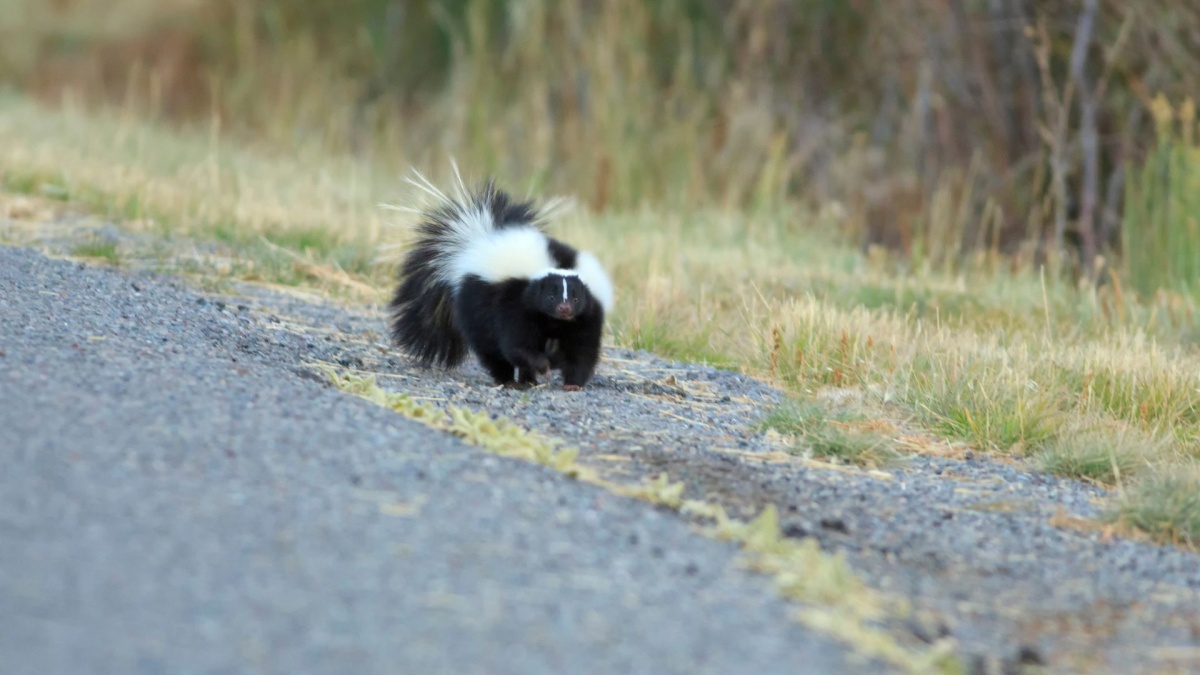
The researchers used 2019 and 2020 data from the national annual mammal survey Snapshot USA program, which gathers data from wildlife cameras owned and operated by private and public users located in all 50 states. In 2020, Snapshot USA received imagery from more than 1,450 camera sites operated by nearly 100 collaborators. According to the data, the detection of striped skunks was similar across both years.
“Very frequently, we will have local or regional studies done on animals that present conflicting information,” said Moll. “Snapshot USA and similar collaborative datasets allow us to not only look at understudied species that are fairly common, like skunks, but also to zoom out from a local or regional site and take a much broader view of a species’ abundance to learn how it’s doing overall.”
Moll and his colleagues refer to the striped skunk as a “synanthropic misanthrope” – a species that both benefits from and suffers from its close existence with humans. In some areas, direct human interventions and vehicular strikes are the leading causes of skunk deaths, which is a trend found among other synanthropic misanthropes like coyotes and raccoons.
“It’s really remarkable how skunks are thriving at broad scales despite sometimes intense human persecution and lethal pest control,” Moll added. “They seem to occupy a unique ecological niche where, so long as food and shelter are present, they can coexist and even thrive alongside humans despite the associated risks.”
“In many ways this makes them emblematic of wildlife species that are likely to flourish in the 21st century, namely those with ecological characteristics that enable them to persist in human-modified landscapes despite the potential costs of human-wildlife conflict.”
“We’re seeing land-use changes at the macro level now, which is why it’s important to have that larger view in which we can learn how species are responding to disturbances, human development and climate change. In many ways this makes skunks emblematic of wildlife species that are likely to flourish in the 21st century, namely those with ecological characteristics that enable them to persist in human-modified landscapes despite the potential costs of human-wildlife conflict.”
This material is based on work supported by the NH Agricultural Experiment Station through joint funding from the USDA National Institute of Food and Agriculture (under Hatch award numbers 1024128) and the state of New Hampshire.
You can read the published article, Habitat productivity and anthropogenic development drive rangewide variation in striped skunk (Mephitis mephitis) abundance, in the November 2022 issue of Global Ecology and Conservation. This work is co-authored by Maximilian L. Allen, Austin M. Green and Rem Moll.
-
Written By:
Nicholas Gosling '06 | COLSA/NH Agricultural Experiment Station | nicholas.gosling@unh.edu

















































